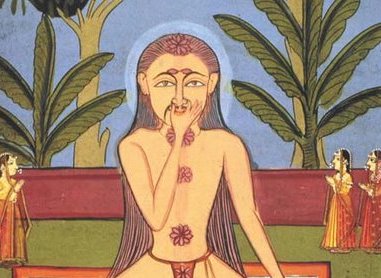basic pranayama for beginners : प्राणायाम

Dear Students,
 Pranayama is the key to your practice. The breath is it. I often say “yoga and meditation” because in the West, yoga is considered to be something apart from meditation. It is not. Likewise, pranayama is no less yoga than asana (physical postures). The are all parts of a larger whole.
Pranayama is the key to your practice. The breath is it. I often say “yoga and meditation” because in the West, yoga is considered to be something apart from meditation. It is not. Likewise, pranayama is no less yoga than asana (physical postures). The are all parts of a larger whole.
If you are only interested in yoga for exercise purposes, fine. As a friend says, “Diet yoga is probably better than nothing.” Even so, breath work is good for your body, metabolism, and stress levels. I really can’t recommend it enough.
The first type of yoga I started doing regularly was at Integral in NYC. The sequencing of their level one class is simple, straightforward and brilliant. I was never captivated by their more advanced levels in the same way, so I moved on. But no other style I tried included much pranayama, with the exception of Genny Kapuler (an amazing teacher for beginners and advanced practitioners alike. No one interested in yoga should pass through NYC without trying her class), who often includes it in asana class, as well as teaching a class devoted to pranayama every Monday. I began to notice in funky, free-for-all vinyasa classes that I had fun during and felt good immediately after, but the feeling didn’t stay with me long. It wasn’t much different than working out. Pranayama made the difference. The most pranayama you’ll get in popular yoga classes is some kapalabhati, which is great, but certainly not the most relaxing. And while you may want more fire from the skull shining breath (kapalabhati), I see your shoulders. You really could use some deep breaths.
I keep pranayama very simple, partly in hopes that the practices will become second nature to you and you’ll do them on your own. If you want an hour and a half of pranayama, go to Genny’s. There are very deep and complicated practices, some known for destabilizing an unprepared mind. These aren’t on the menu. You should learn pranayama with a teacher, and then practice on your own. The most basic practice I teach is an antar kumbhaka, or breath retention on inhalation.
Antar Kumbhaka for Beginners
- Sit or lie comfortably with an open chest. Once you’re accustomed to this breath, you can do it standing or even upside down.
- Feel your breath. Notice where it is, how it feels, and how you feel. Then return your attention back to the breath.
- Put your tongue at the back of your upper teeth, where it hits the gum. Keep it there for the entire practice.
- Inhale through your nose to the top of your chest for 4 counts. Hold your breath for 7 counts. Exhale through your mouth, around your tongue, for 8 counts.
- Repeat up to 4 times. Once accustomed to it, you can repeat up to 8 times. Do this practice as much as you like. If you do it twice a day, you will transform. (Haha. Just kidding. You will feel better though.)
This breath is very soothing. I sometimes do it once at the beginning of savasana, to settle in. It can also be done when you feel on edge, before you go to sleep, before you eat, before an interview, and so on. It’s more effective in these situations if you practice it frequently, but it’s always worth a try.